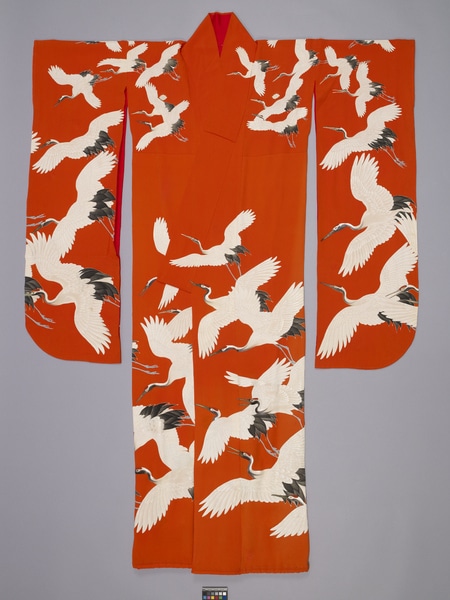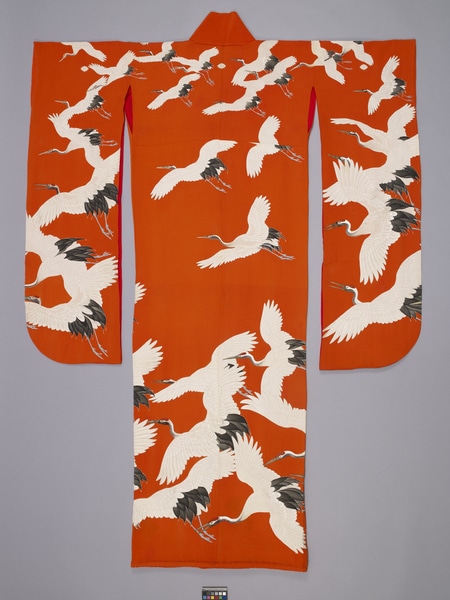Kimono Item Number: 3141/5 from the MOA: University of British Columbia


Description
Furisode (振袖) with a crane design, one of the auspicious designs used for kimono. Garment displays flocks of white cranes with dark grey heads and tail feathers in flight across a bright orange background. Kimono is open at the front, and sleeves have long hanging panels open toward the body, with a small opening for the wrists at outside top. Bottom hem is thickened with stuffing known as fuki (袘). The interior body, sleves and lapels of the garment are lined in red silk. It has five family crests or kamon (家紋) in the shape of diamond-shaped flower motifs known known as ken hanabishi (剣花菱).
History Of Use
Furisode (振袖), a style of formal kimono with long swinging sleeves. There are three different types of furisode with different sleeve lengths; ō-furisode (with longest sleeves, around 115cm), chū-furisode (with long sleeves around 100cm) and ko-furisode (with shorter sleeves, around 80 cm). Worn by unmarried women on auspicious occasions such as weddings.
Narrative
Purchased by donor from a dealer in the Ginza district of Tokyo.
Specific Techniques
Yūzen or Yūzen-zome (友禅染) used for this kimono is a traditional dyeing technique originated in Kyoto, Japan.
Item History
- Made in Japan between 1912 and 1926
- Owned by Michael Olich before November 20, 2015
- Received from Michael Olich (Donor) on November 20, 2015
What
- Name
- Kimono
- Identification Number
- 3141/5
- Type of Item
- kimono
- Material
- silk fibre and dye
- Overall
- height 179.5 cm, width 126.0 cm
Who
- Culture
- Japanese
- Previous Owner
- Michael Olich
- Received from
- Michael Olich (Donor)
Where
- Holding Institution
- MOA: University of British Columbia
- Made in
- Japan
When
- Creation Date
- between 1912 and 1926
- Ownership Date
- before November 20, 2015
- Acquisition Date
- on November 20, 2015
Other
- Item Classes
- textiles
- Condition
- good
- Current Location
- Case 82
- Accession Number
- 3141/0005